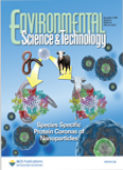Latest study on gene-expression respones in the waterflea to combined stressors featured on ChemicalWatch.com
Latest study on gene-expression respones in the waterflea to combined stressors featured on ChemicalWatch.com
Genetic responses to environmental chemicals do not always correlate with higher-level effects, such as growth and reproduction in aquatic test species, according to our latest study recently published in the journal Environmental Science & Technology. This finding potentially has important implications for risk assessment in relation to the Adverse Outcome Pathways (AOP) framework. AOPs try to predict responses at higher biological levels, which are more relevant for risk assessment, starting from genetic responses. ChemicalWatch.com, an online repository which provides businesses with the information they need to manage the risks of chemicals responsibly, has recognized the important value of these findings and featured the study on their website. More information can be found on ChemicalWatch.com. The website allows a free 14-day trial which gives access to the full text.
Scientific abstract
The present study investigated the possibilities and limitations of implementing a genome-wide transcription-based approach that takes into account genetic and environmental variation to better understand the response of natural populations to stressors. When exposing two different Daphnia pulex genotypes (a cadmium-sensitive and a cadmium-tolerant one) to cadmium, the toxic cyanobacteria Microcystis aeruginosa, and their mixture, we found that observations at the transcriptomic level do not always explain observations at a higher level (growth, reproduction). For example, although cadmium elicited an adverse effect at the organismal level, almost no genes were differentially expressed after cadmium exposure. In addition, we identified oxidative stress and polyunsaturated fatty acid metabolism-related pathways, as well as trypsin and neurexin IV gene-families as candidates for the underlying causes of genotypic differences in tolerance to Microcystis. Furthermore, the whole-genome transcriptomic data of a stressor mixture allowed a better understanding of mixture responses by evaluating interactions between two stressors at the gene-expression level against the independent action baseline model. This approach has indicated that ubiquinone pathway and the MAPK serine-threonine protein kinase and collagens gene-families were enriched with genes showing an interactive effect in expression response to exposure to the mixture of the stressors, while transcription and translation-related pathways and gene-families were mostly related with genotypic differences in interactive responses to this mixture. Collectively, our results indicate that the methods we employed may improve further characterization of the possibilities and limitations of transcriptomics approaches in the adverse outcome pathway framework and in predictions of multistressor effects on natural populations.
Full reference
Dieter De Coninck, Jana Asselman, Stephen Glaholt, Colin Janssen, John Colbourne, Joseph Shaw, Karel De Schamphelaere. Genome-Wide Transcription Profiles Reveal Genotype-Dependent Responses of Biological Pathways and Gene-Families in Daphnia Exposed to Single and Mixed Stressors. Environmental Science & Technology. In press. DOI: 10.1021/es4053363

